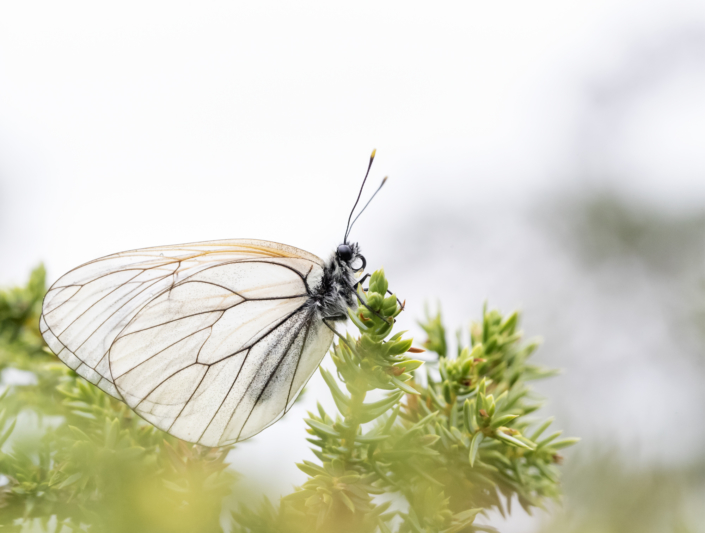This post is also available in: Swedish
Black-veined white – Aporia crataegi
Black-veined white – Aporia crataegi
The black-veined white, is a large butterfly of the family Pieridae. It occurs in orchards and thickets throughout most of Europe, temperate Asia, Korea, and Japan. It is normally found at altitudes of 500 to 2,000 metres (1,600 to 6,600 ft).
The flight period of the black-veined white is between April and July. The adults are quite social and their abundance varies greatly from year to year. The eggs are laid on the food plant, usually a member of the rose family Rosaceae and often on trees in the genus Prunus such as the rowan or the bird cherry (Prunus padus), the hawthorns (Crataegus species) or the apple (Malus domestica). The eggs are yellow at first, darkening with age, and are laid in groups of 30 to 100. They take about three weeks to hatch. The caterpillars are greenish grey with transverse banding and tend to remain in a group with a communal larval web. The caterpillars overwinter communally in a webbing tent with entwined leaves. Caterpillars feed close together on the leaves of the food plant at first, before dispersing in the later developmental stages to other parts of the tree. The pupa is creamy white, marked with black, attached by a silken girdle to a twig. The pupal stage lasts about three weeks.























